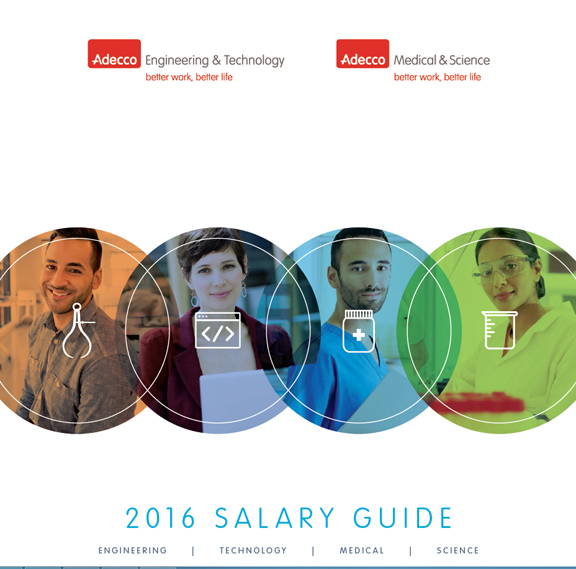Job Search in the New Year? First, Check Out What Your Salary Should Be.

Adecco launches an online salary calculator, based on the data from its 2016 Salary Guide.
Latest News
January 11, 2016
 Adecco launches an online salary calculator, based on the data from its 2016 Salary Guide.
Adecco launches an online salary calculator, based on the data from its 2016 Salary Guide.If one of your new year resolutions is to go after the engineering or design job you’ve always dreamed about, it might be helpful to find out first what you can hope to earn. For that, you may turn to staffing firm Adecco’s Salary Calculator.
According to Jesse Wright, Adecco’s vice president of Recruiting and Delivery, the online tool is based on the company’s annual Salary Guide, which provides a breakdown of national and regional salaries. “Our salary figures are based on research conducted by CareerBliss and the data used in the Salary Calculator has been thoroughly vetted and verified,” says Wright.
Take the job of a CAD drafter, for instance. Adecco’s “2016 Salary Guide for Engineering, Technology, Medical and Science” reveals the job earns between 45-50K in the West Coast. But the same job is listed between 43-48K in the South. On the other hand, a design engineer in the West can expect to earn between 64-70K, but 62-69K in the Midwest. The salaries are also divided by small, medium and large companies, so the same design engineer, for example, can earn 64K in a small firm, but 70K in a large enterprise.
Perhaps an indicator of the growing importance of electrical components in the IoT (Internet of Things) era, electrical engineer seeking jobs in the west can expect about 70K in a small firm, 73K in a midsize firm and 78K in a large firm; in contrast, a mechanical engineer in the same region can expect 66K, 73K or 76K in a small, midsize or large firm respectively. A software engineer in the West can earn between 67-76K. The salaries are also listed based on industries: aerospace, energy, oil & gas, mining and so on.
In the past, a résumé with too many job changes might raise the hiring manager’s eyebrows. But these days, job changes are the norm. Wright points out: “It’s now rare to have an employee with 10 or more years tenure anywhere. Change is almost an expectation. When you add on the increased demand for various skill sets, especially those within technology and engineering, there are no shortage of opportunities for people to investigate.”
It’s difficult to pinpoint the usual reasons for job changes, but, according to Wright, “Environment, company culture, exposure to new opportunities and technology, chances to grow, flexibility are all part of the decision. Leadership cannot be undervalued either. As the saying goes, most people don’t leave companies, they leave managers, and that is very true.”
In the Silicon Valley, startup competition for top talent is fierce. Therefore, employers who want to lure and retain high-performers have to resort to other perks: free shuttle pickup, onsite gym, canteens serving daily gourmet meals, childcare and longer vacations are just a few.
Wright observes: “Many [jobseekers] are attracted to the ideas of flexibility and investment in the employee. We see more companies offering a non-traditional work environment with flexibility. I think this demonstrates a culture that values and trusts their people. Family leave, flexible work hours and locations, health benefits, training and educational opportunities are all investments into the employee, which creates loyalty.”
For more, visit Adecco’s home page.
Subscribe to our FREE magazine, FREE email newsletters or both!
Latest News
About the Author
Kenneth Wong is Digital Engineering’s resident blogger and senior editor. Email him at [email protected] or share your thoughts on this article at digitaleng.news/facebook.
Follow DERelated Topics






